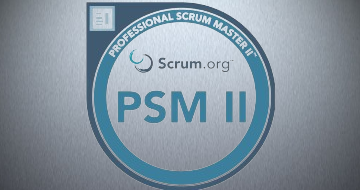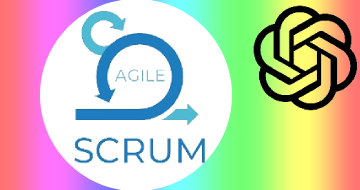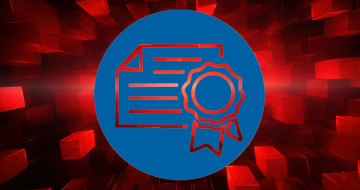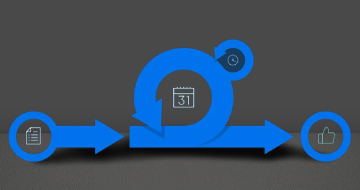IIRF Online > Business > Project Management > Professional Scrum Master (PSM) > Scrum Master II Certification Prep & Mock Exams (SM 2)
Scrum Master II Certification Prep & Mock Exams (SM 2) by Udemy
Pass Scrum Master (SM II) Certifications in Agile Scrum: Master difficult scenarios as a Scrum Master (Prep for SM 2)
Course Highlights
- Preparation and advice for taking the Scrum Master II certification
- Advance your Scrum knowledge to the next level with a detailed look at the more difficult Scrum concepts
- A close look at many challenging scenarios and how to deal with them correctly using Scrum
- A deep dive on the types of questions and topics you may get asked in the assessment
- About the Scrum Master II certification with all the preparation necessary to take the assessment
- Tried and tested advice on applying the Scrum theory in practice
- All Scrum theory covering the Scrum Team, Scrum Events, Scrum Artifacts, Empiricism and Evidence-based Management
- Questions, answers and detailed explanations of the answers
Skills you will learn!
Curriculum
8 Topics
Introduction Scrum Master II
Essential Reading
This is an Unofficial course not endorsed by Scrum.org
Join the Student Group
Where to go to buy and take the PSM II ® assesment
Free resources for additional learning
My Scrum Summary Booklet (Downloadable PDF)
Scrum Summary Booklet
9 Topics
Empiricism Introduction
Question Section Explained
Q1 - What is Scrum based on?
Q2 - How do you define Empiricism?
Q3 - Shorter or longer Sprints?
Q4 - How does Scrum apply Empiricism?
Q5 - Pillars of Empirical Process Control
Q6 - Stakeholders not attending the effect on Empiricism
Empiricism Summary
13 Topics
Scrum Values Committment & Respect
Q1 - A heated argument
Q2 - Pressure from Stakeholder
Scrum Values Courage
Q3 - Developer is left out
Scrum Values Courage scenario introduction
Q4 - Environment changes causes issues
Scrum Values Openness
Q5 - A velocity problem
Scrum Values Focus
Q6 - Only just meeting the Sprint Goal
Q7 - Daily Scrum running over
Scrum Values Summary
13 Topics
Scrum Team Introduction
Q1 - Making the first Sprint productive
New Team problems
Q2 - Changing team members
Q3 - Making a Nexus
Scaled Scrum
Q4 - Splitting a big group into Scrum Teams
Q5 - Too many Developers
Component vs Feature Teams
Q6 - Siloed Teams
Q7 - Component team short term pros
Component and Feature teams further reading
Scrum Team Summary
12 Topics
Scrum Events Introduction
Q1 - First Event of the Sprint
Sprint Events Lengths
Q2 - Time between Sprints?
Q3 - Daily Scrum Questions
The Daily Scrum
Q4 - Teams in different time zones
Events and Timeboxing
Q5 - Where to have the Daily Scrum
Q6 - Hardening Sprint bad practice
Q7 - Who chooses the Daily Scrum location?
Scrum Events Summary
7 Topics
Scrum Artifacts Introduction
Q1 - When are Artifacts reviewed
Scrum Artifacts Explained
Q2 - Increments in the same environment
Q3 - How many increments per Sprint?
Q4 - When an increment is born and who can edit it?
Scrum Artifacts Summary
12 Topics
"Done" Introduction
Q1 - Description of Definition of Done
Q2 - Proper use of velocity
Q3 - High velocity but Sprint Goal not met
Q4 - Reduction of Definition of Done bad practice
Changing Defo of Done & Q5 - Should all items be done by Sprint End?
Q6 - What does Done mean?
Q7 - What to do if Definition of Done is not met
Q8 - Documentation in the Definition of Done
Scaled Scrum and the same Definition of Done
Q9 - Should the Definition of Done include testing?
Done Summary
19 Topics
Self-management Introduction
Q1 - who plans the work?
Q2 - What is true about the Sprint Goal
Q3 - Self-management and timeboxes
Signs of Self-management
Q4 - Signs a team is Self-managing
Signs a team is Self-managing continued
Boundaries and Timeboxing to aid self-management
Self-management and the Scrum Master's involvement
Q5 - Self-management to solve team disagreements
Q6 - Team argument
Values not shown in team arguments
Q11 - Disruptive Developer
Q7 - Reliance on an external specialist
Self-management and the Scrum Values
Q8 - Work distribution between teams
Q9 - Scaled Scrum start and end dates of Sprints
Q10 - One person taking too much time in the Daily Scrum
Self-management Summary
4 Topics
Facilitation Introduction
Q1 - External Specialist dependancy
Q2 - PO not attending the Retrospectives
Facilitation Summary
10 Topics
Coaching and Mentoring Introduction
Q1 - Over running the Daily Scrum
Q2 - Over running the Sprint Review
Q3 - A new Product Owner
Q4 - Keeping Events true to their purpose
Q5 - Cheering Done items in the Sprint
Q6 - Sprint Review too fast - a cross-functional team
Q7 - When the developers don't have the skills and tools
Mechanical Scrum to Professional Scrum
Coaching and Mentoring Summary
20 Topics
Product Backlog Management Introduction & "Ready"
Q1 - How are items considered ready for Sprint Planning?
Q2 - How much time should be spent on backlog refinement?
Q 2.5 - When should Product Backlog Refinement be done?
Q3 - Ordering the Product Backlog
Scaled Scrum and the Product backlog
Q4 - Multiple teams same Product Backlog?
Q5 - Bringing in an additional team concerns
Q6 - Pressure to release
Q7 - Who is best to discuss dependencies?
Product Backlog Changes
Q8 - Can Sprint Backlog items be changed mid-sprint?
Q9 - How to handle items added from outside of the Product Backlog
Q10 - Yikes the development is more complex than anticipated
Q11 - What to do with changes that are needed
Developers and the Product Backlog
Q12 - How to ensure the Developers understand the Product Backlog items
Product Owner Delegation
Q13 - Can't finish all the items in a Sprint
Product Backlog Management Summary
8 Topics
Stakeholders Introduction
Q1 - Budget cuts
Q2 - Disappointed stakeholders
Q3 - Pressure from a key stakeholder
Q4 - Who is the most important stakeholder?
Q5 - When can the Scrum Team meet the stakeholders?
Q6 - Unsatisfied stakeholders
Stakeholders Summary
16 Topics
How Scrum reduces risk
Q1 - Feedback after a major release
Q2 - Things to consider to decide the Sprint length
Q3 - Product Owner bad practice risks
Q4 - Developers working in silos risk
Q5 - Risk of having the Daily Scrum every 2 days (breaking Scrum)
Q6 - Risk with the Product and emergency changes
Adapting as soon as needed after inspection
The risk of Technical Debt
Q7 - Technical debt building up
Q8 - The relationship between velocity and technical debt
Q9 - The relationship between delivery and technical debt
Q10 - Pressure to release and missing testing
Q11 - Trying to predict the next release on bad information
Q12 - Product Owner delaying release
Risk Summary
6 Topics
True Leader
Organization Culture Introduction
Q1 - Coaching others to keep to the Scrum framework
Culture continued
Q2 - Not applying Scrum properly
Culture Summary
5 Topics
Exam Tips for the assesment
Exam Tips
Where you can find more questions to try for free
How to use the 2 Practice Exams
Quick Bullet Points to remember
2 Topics
Questions from Empiricism to coaching and mentoring
Questions from Product Backlog Management to Organizational Design & Culture
2 Topics
Thanks and one last thing
Bonus - more from me

Scrum Master II Certification Prep & Mock Exams (SM 2)




